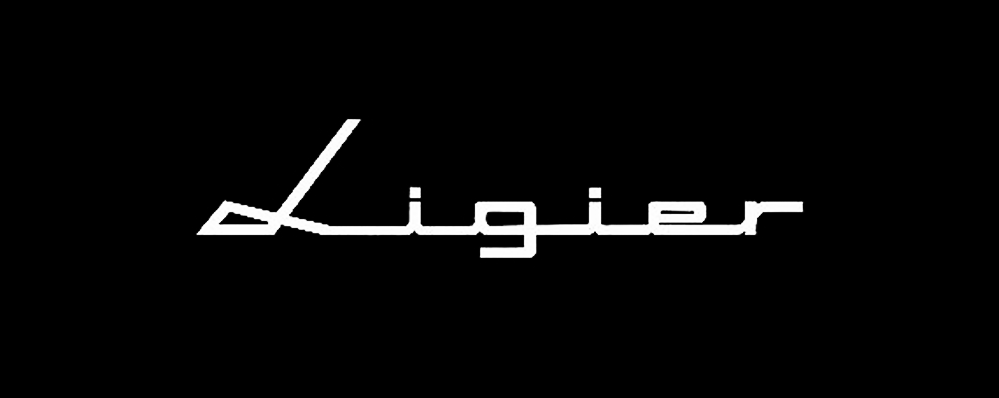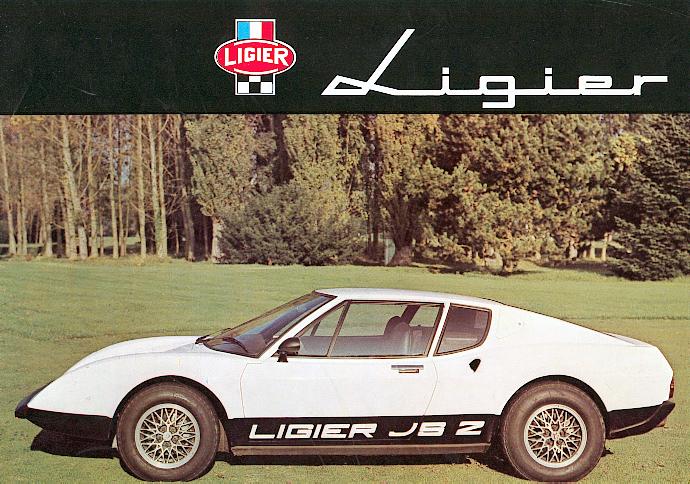The firm entered the automobile business with the Ligier JS 2: a sports car for the road powered by the same Maserati V6 engine as the Citroen SM. The Maserati V6 engine had a modern design and the JS 2 was considered by many as a well designed car with a very good power-to-weight ratio. The final SM were also produced in the Ligier factory in Vichy. The 1973 energy crisis caused such a decrease for the market of the JS 2 that production ceased soon after, and the firm reconverted to microcars. Ligier is now owned by Piaggio.

The firm is more known for its Formula One team than for its production models. Ligier entered Formula One in 1976 with a Matra V12-powered car, and won a Grand Prix with Jacques Laffite in 1977. This is generally considered to have been the first all-French victory in the Formula One World Championship.
The deal with Matra ceased in 1979 and Ligier built a Cosworth-powered wing-car the Ligier JS11. The JS11 begin the season winning the first 2 races in the hands of Laffite. However, the JS11 faced serious competition when Williams and Ferrari introduced areodynamically modified cars. The rest of the season was less successful for the French Marque.
The JS11 and its successors made Ligier one of the top teams through the early 1980s. Despite substantial sponsorship from public French companies – mainly SEITA and Francaise des Jeux (deals which Francois Mitterrand helped to put in place) – the competitiveness of the team began to decline around 1982; but the team survived until 1996. In the mid 1980’s, the team benefitted from a “free” Renault turbo engine deal. This made them more competitive, though not a frontrunner, despite significant budgets from companies such as Gitanes, Loto and elf. When Renault left the sport in 1988, Ligier was left without a bona fide engine supplier. An abortive collaboration with Alfa Romeo was followed by a customer engine arrangement with first BMW and then Mugen-Honda.

In the last years Ligier had little public support and lacked funds. Surprisingly the team was somewhat more competitive during this period, perhaps due to the talents of aerodynamicist Frank Dernie, who’s skills had developed the Williams of Alan Jones that so regularly beat the Ligier’s in the late 1970’s The talent of the young engineer Lo?c Bigois may have played some role as well. But this also brings some to think that, in previous years, Guy Ligier was more worried about making money than restoring the team competitiveness. Famous for his histrionics and boisterous pitlane explosions, the recalcitrant Guy Ligier added greatly to the character of Formula One events from the mid 1970s onward, if not through the competitiveness of his teams. As one F1 commentator famously said, “You always had the feeling that even when they were winning they didn’t know why…”
In 1996 the MugenHonda-powered JS43 car turned out to be a well balanced car, if not on par with the Williams entries. It became a surprising outsider for victory as well, with the team taking the chequered flag with Olivier Panis at the Monaco Grand Prix, albeit in a race of heavy attrition. While the victory was a famous moment for French Motorsport (the first “all-french” victory at Monaco since Rene Dreyfuss in Bugatti in 1930), it must be said it came very much against the run of play in a race in which only four cars finished the full distance.
The team was sold to Alain Prost soon after and became Prost GP in 1997. Prost GP, despite substantial financial backing by large private French companies failed to make the team competitive and went bankrupt.
(A portion of this article is licensed under the GNU Free Documentation License. It includes content from this Wikipedia article.)
